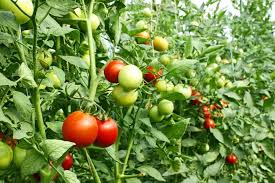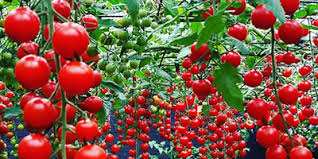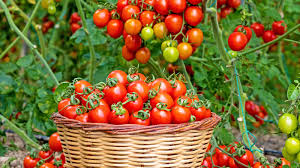With the adoption of improved high-yielding and disease-resistant commercial hybrids, seed has become an expensive input in tomato production.
Seedling cost may significantly increase if losses occur due to unhygienic practices. This situation is common, especially when traditional seedbed methods are followed to produce seedlings.
The following healthy seedling production techniques have been validated and proven effective:
1. Use of Seedling Trays: Locally available seedling trays with hole dimensions of about 4 cm deep and 4.5 cm in diameter are recommended.
2. Growing Medium Preparation: Fill the holes with a well-draining growing medium, such as peat moss, commercial potting soil, or a mixture of sand, compost, and burnt rice hulls. When the latter mixture is used, ensure the compost is mature and free of soil-borne pathogens.
3. Tray Placement: Place trays on raised surfaces like benches in a sheltered area. If benches are unavailable, prepare raised beds 1.5 m wide to serve as platforms for the trays.
4. Protection Using Nethouse or Net Tunnels: Seedlings should be grown inside a 60-mesh nethouse. If unavailable, construct net tunnels over seedling trays. Erect inverted “U”-shaped iron or aluminum bars, 2 m wide and 1 m high, over each bench or raised bed, maintaining 1 m spacing between bars within a row.
Bars should be about 1 cm in diameter. Cover with 60-mesh nylon netting tightly pulled and buried 10–15 cm in the soil to prevent insect entry (Talekar et al. 2003).
If 60-mesh nylon net is not available, nets up to 32-mesh may be used with close monitoring of whitefly intrusion, including spraying outer surfaces with neem or chemical pesticides.
Read Also: How to Extract and Package Snail Slime (Snail filtrate) for Commercial Use
In open conditions, controlling insect pests like whitefly, thrips, and aphids is critical as they transmit diseases. Use imidacloprid or neem pesticides as seed, soil, or foliar treatments when necessary.

5. Seed and Soil Treatment: Commercial growing media may lack proper sterilization. Therefore, seeds should be treated with chemical and/or biocontrol agents as a preventive measure against soil-borne diseases.
Treatment with broad-spectrum fungicides such as captan and/or thiram reduces damping-off losses (Hanson et al. 2000). Alternatively, Trichoderma viride and Pseudomonas fluorescens treatments are effective.
6. Sowing and Thinning: Sow two seeds per hole at a depth of 0.5 cm and thin seedlings 2–3 days after the appearance of the first true (non-cotyledon) leaves (Hanson et al. 2000).
7. Irrigation Management: Apply 15 ml of water per hole during the first irrigation. Subsequent irrigations should be 7.5–10 ml (maximum) per hole daily, preferably in the morning. During high temperatures, especially summer, apply 7.5–10 ml twice daily morning and afternoon. Water amount depends on the growing substrate and its moisture retention capacity.
Read Also: The Health Benefits of Using Accent Seasoning on your Cooking
8. Seedling Emergence: Seedlings emerge within eight days at optimal soil temperatures of 20–30˚C (Hanson et al. 2000).

9. Fungicide Application Before Transplanting: If seeds were not treated with chemical or biological agents, apply a recommended fungicide such as Etridiazole to control soil-borne fungal diseases. Apply 5 ml of fungicide solution per seedling to the growing substrate 1–2 days before transplanting.
10. Fertilizer Application for Seedling Vigor: After three weeks, check seedlings for vigor and leaf color. Yellowing leaves or thin seedlings indicate the need for fertilizer with an NPK ratio of 15-10-15 + 2 MgO. Apply diluted fertilizer (1:1000) at 5 ml per seedling via foliar or soil application 1–2 times before transplanting. Reduce fertilizer if seedlings grow too rapidly before transplanting readiness.
11. Net Handling During Treatment: Remove the net to apply fungicides or fertilizers quickly, then close the net promptly to prevent insect entry. When trays are arranged on multiple benches or beds, open only one at a time.
12. Seedling Selection for Transplanting: Use healthy seedlings at the four- or five-leaf stage (about four weeks old), which are vigorous and stocky for transplanting (Hanson et al. 2000).
Do you have any questions, suggestions, or contributions? If so, please feel free to use the comment box below to share your thoughts. We also encourage you to kindly share this information with others who might benefit from it. Since we can’t reach everyone at once, we truly appreciate your help in spreading the word. Thank you so much for your support and for sharing!

